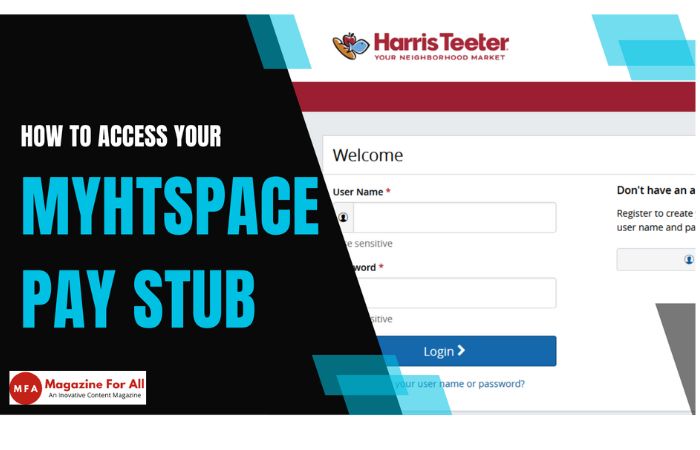In today’s globalized world, businesses are constantly seeking ways to gain a competitive edge. One often overlooked strategy that can make a significant impact is investing in language training programs for employees.
The ability to communicate effectively in different languages can be a game-changer for both employees and the businesses they serve. In this article, we’ll explore how language training can transform not only the way your employees communicate but also how it can impact your business’s overall performance.
Table of Contents
Benefits of Language Training for Employees
A. Improved Communication Skills
Language training goes beyond just learning words and phrases; it’s about fostering effective communication. Imagine an employee who can seamlessly converse with clients or partners in their native language. This kind of communication can eliminate misunderstandings, build trust, and establish strong, lasting relationships. When your employees are proficient in another language, they can express themselves clearly and confidently, making interactions smoother and more productive.
B. Enhanced Job Prospects and Career Growth
Language skills open doors. They make your employees more valuable assets, both within your organization and in the broader job market. Being proficient in multiple languages can significantly enhance job prospects and career growth opportunities. Employees who are multilingual are often more competitive and can take on roles that require communication with a broader range of customers, partners, or colleagues.
C. Increased Self-Confidence and Cultural Awareness
Language training isn’t just about mastering words; it’s about embracing cultures. When employees learn a new language, they gain a deeper understanding of the culture associated with it. This cultural awareness can enhance their ability to work with people from diverse backgrounds. It also boosts their self-confidence, as they feel more comfortable navigating multicultural situations. For example, an employee proficient in Spanish may have a better understanding of the customs and etiquette when dealing with Spanish-speaking clients.
Benefits of Language Training for Business

A. Expanding into New Markets and Attracting Global Customers
Your business is looking to expand its reach, tapping into new markets beyond your home turf. The question is, how do you effectively connect with potential customers who speak different languages? Language training is the key. When your employees are equipped with the ability to communicate in the language of your target market, you’re not just expanding; you’re entering new territories with a competitive advantage.
Consider a tech company that decides to venture into the Chinese market. By providing language training in Mandarin to its sales and support teams, they can now effectively engage with Chinese customers. The result? An increased customer base and a better chance at capturing the attention of global clients.
B. Building a Diverse and Inclusive Workforce
In today’s diverse and multicultural work environment, embracing inclusivity is not only a moral imperative but also a strategic move. By offering language training to your employees, you’re creating a more inclusive and welcoming workspace. When your team can communicate in multiple languages, you’re not just breaking down language barriers; you’re fostering a sense of belonging for everyone, regardless of their native tongue.
Imagine a scenario where your company operates in a region with a significant immigrant population. By providing language training in the native languages of your employees, you’re not only encouraging their integration into the workplace but also showing a commitment to diversity and inclusivity.
C. Meeting Industry-Specific Language Requirements
Certain industries have specific language requirements that are critical to their success. For instance, in the healthcare field, the ability to communicate in multiple languages can be a matter of life and death. A nurse who can understand and speak Spanish can provide better care to a Spanish-speaking patient, ensuring that crucial medical information is accurately conveyed.
In the legal field, interpreters are often required for cases involving non-English-speaking clients. But what if your legal team could handle consultations in multiple languages themselves? This not only expedites the process but also saves on additional costs.
Types of Language Training Programs
When it comes to providing language training for your employees, there’s no one-size-fits-all solution. Different approaches can be tailored to meet the specific needs and preferences of your team. Let’s explore the various types of language training programs available:
A. In-house Language Training
In-house language training programs are conducted right at your workplace. This approach is convenient for your employees, as they don’t have to commute to an external location for their language classes. In-house training can be customized to align with your business goals and can focus on industry-specific language skills that are directly applicable to your work. This option also encourages team bonding, as employees can learn together during company-sponsored classes.
B. Online Language Courses and Tutor
Online language courses have gained popularity for their flexibility and accessibility. These courses can be particularly useful if your employees have busy schedules or work remotely. With a plethora of language learning apps and platforms available, employees can choose when and where they want to study. Online courses also offer a wide range of languages to learn, making it easy to cater to your employees’ language needs.
Furthermore, the online landscape offers a vast array of language-learning tools and platforms, making it easier than ever to find the right resources. Whether it’s a dedicated language learning app, an interactive website, or an online language tutor, employees have the freedom to choose the most suitable method that caters to their unique learning preferences.
For instance, an employee with a preference for personalized guidance can opt for an online language tutor who can provide one-on-one instruction, tailored to their specific goals and pace. As a result, online language courses not only empower employees to learn at their own pace but also provide an extensive selection of languages, enabling businesses to align language training with the diverse linguistic needs of their workforce.
C. Language Immersion Programs
Language immersion is an intensive approach to language learning. In these programs, participants are surrounded by the target language, both in and out of the classroom. This method can be highly effective, as it pushes employees to quickly adapt and communicate in the new language. Language immersion programs often involve real-life scenarios, helping employees gain practical language skills.
D. Group Classes vs. One-on-One Training
In the realm of language training, you have the choice between group classes and one-on-one training. Group classes can be a great way to foster collaboration among your employees. They learn together, practice together, and help each other. However, individual attention may be limited in a group setting. On the other hand, one-on-one training offers personalized learning experiences. It’s an ideal choice for employees who need specific language skills or have unique goals.
Tips for Maximizing Language Training Benefits
Getting the most out of your language training programs involves more than just enrolling employees; it requires a strategic approach that fosters a supportive and effective learning environment. Here are some tips for maximizing the benefits of language training:
A. Creating a Supportive Language Learning Environment
- Promote Inclusivity: Encourage an inclusive atmosphere where employees from diverse language backgrounds feel comfortable learning and practicing.
- Provide Resources: Offer access to language learning resources, such as books, apps, and online courses, to support self-study.
- Peer Support: Facilitate language exchange among employees who speak different languages. Pairing up individuals with complementary language skills can enhance learning.
- Recognition and Rewards: Acknowledge and reward language proficiency milestones achieved by employees. It can serve as a motivator.
B. Encouraging Cross-Cultural Interactions within the Workplace
- Cross-Departmental Collaboration: Encourage employees from different departments to work together on projects, promoting the use of the target language.
- Cultural Workshops: Organize cultural awareness workshops to help employees understand the customs and traditions of the cultures associated with the language they are learning.
- Language Clubs: Support the creation of language clubs or groups where employees can engage in informal language practice during breaks or after work.
- Multilingual Events: Host events that celebrate cultural diversity, where employees can showcase their language skills and share their heritage.
C. Setting Clear Language Training Goals and Benchmarks
- Individualized Learning Plans: Tailor language training plans to individual employee goals. What specific language skills are they aiming to develop?
- Regular Progress Assessments: Implement regular assessments to track progress and adjust training as needed. Clear benchmarks help employees stay motivated.
- Real-World Application: Emphasize real-world language use by incorporating relevant tasks or scenarios into the training.
- Feedback and Improvement: Provide constructive feedback and support for continuous improvement. Recognize and celebrate achievements along the way.
Remember that language training is an ongoing process, and its success relies on consistent effort and support. By creating a supportive learning environment, encouraging cross-cultural interactions, and setting clear goals and benchmarks, you can maximize the benefits of language training for your employees and your business.










































































